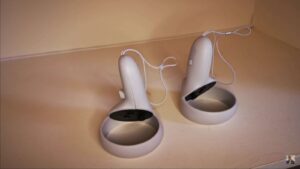Augmented Reality (AR) is a transformative technology that overlays digital information onto the physical world. This article examines the various AR types and their applications, underscoring AR’s impact in fields like healthcare, remote assistance, and digital marketing.
Location-Based AR: Definition and Applications
Location-based AR, or markerless AR, utilizes GPS, accelerometers, and digital compasses to pinpoint and display relevant virtual objects based on the user’s location. Its ease of integration into smartphones has made it widely accessible. A prime example is the globally acclaimed Pokémon Go game, which revolutionized AR in the commercial sphere, particularly for travelers and explorers.
Projection-Based AR: Understanding Its Use
Projection-based AR, a non-interactive form of AR, projects computer-generated graphics onto physical surfaces, facilitating the creation of interactive 3D models. This technology is instrumental in project mockups, allowing for the easy assembly and disassembly of parts.
Superimposition-Based AR in Healthcare
Superimposition-based AR enhances physical objects by overlaying them with digital imagery. In healthcare, it enables doctors to superimpose X-ray images onto the actual fractured part, enhancing patient understanding and treatment accuracy.
Outlining AR in the Automotive Industry
Outlining AR focuses on recognizing and outlining shapes beyond human vision. Its application in the automotive sector aids drivers by indicating paths and promoting safer navigation.
Recognition-Based AR: Scanning and Translation
Recognition-based AR, employed in scanning QR codes, is widely used by brands like Amazon and Coca-Cola for promotional purposes. Additionally, it aids in language translation, as seen in tools like Google Lens, enhancing the travel experience in foreign locales.
Marker-Based AR: Enhancing User Engagement
Marker-based AR triggers digital graphics or videos upon scanning physical images, fostering interactive brand engagement. This technology is notably applied in AR wine labels and business cards, enhancing brand awareness and emotional connection.
Global Examples of AR Applications
The AR market, valued at USD 17.67 billion in 2020, continues to grow rapidly. Examples of AR’s global impact include IKEA Place, which employs Location-Based AR to visualize furniture placements, and Disney’s Projection-Based AR for creating thrilling experiences like the Haunted Mansion.
Comparison Table
| Type of AR | Definition | Key Applications |
|---|---|---|
| Location-Based AR | Uses GPS, accelerometers, and digital compasses to overlay virtual objects based on location. | Gaming (e.g., Pokémon Go), Tourism, Exploration |
| Projection-Based AR | Projects digital graphics onto physical surfaces, allowing for interactive 3D designs. | Architecture, Design Mockups, Education |
| Superimposition-Based AR | Enhances physical objects by overlaying them with digital imagery. | Healthcare (e.g., X-ray superimposition), Retail |
| Outlining AR | Recognizes and outlines shapes beyond human vision. | Automotive (e.g., navigation assistance) |
| Recognition-Based AR | Identifies and interprets objects, QR codes, and visual markers to display relevant information. | Marketing (brand promotion), Language Translation |
| Marker-Based AR | Triggers digital graphics or videos upon scanning physical images. | Brand Engagement (e.g., wine labels, business cards) |
Video Guide
To answer all your questions, we have prepared a video for you. Enjoy watching it!
How Does Mixed Reality Expand on Augmented Reality?
In the evolving landscape of digital technology, understanding how Mixed Reality (MR) builds upon and expands the capabilities of Augmented Reality (AR) is essential. This section delves into the nuances of this progression, offering insights into how MR is not just an extension, but a significant advancement over AR.
Defining the Expansion from AR to MR
While Augmented Reality overlays digital content onto the real world, Mixed Reality leaps further by creating a more integrated experience where virtual and physical worlds not only coexist but also interact in real time. MR technology achieves this through advanced sensors and computing power, allowing for a deeper immersion than AR.
Enhanced Interaction and Immersion
Mixed Reality provides a more immersive experience where users can manipulate and interact with digital objects as if they were part of the physical environment. This level of interaction is more advanced than AR, where the digital content is typically static or minimally interactive.
Broader Applications and Real-world Integration
MR’s ability to blend the real and virtual worlds opens up new possibilities across various fields. In healthcare, for instance, MR can provide surgeons with real-time, interactive 3D models during procedures. In architecture, designers can walk through virtual buildings as if they were already built. These applications demonstrate MR’s potential to not only display digital content, but to also allow users to work and interact with it in a meaningful way.
Conclusion
Augmented Reality is increasingly bridging the gap between the virtual and the real, with widespread applications in retail, healthcare, automotive, and advertising. As AR technology evolves, its potential remains largely untapped, with developments like AR glasses eagerly anticipated.


Average Rating